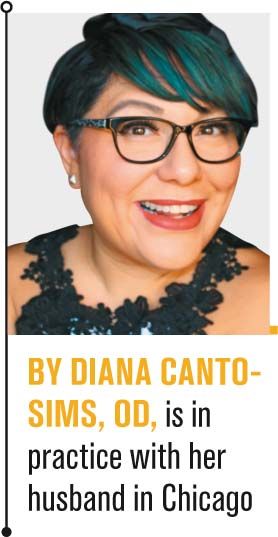6 tips to address, survive one-star online reviews
If you have not yet received a bad review, it is coming. It is only a matter of time. Have you Googled your practice recently? Anyone with a smartphone, social media account, or an email account can go online and rant about anything-including your practice.


If you have not yet received a bad review, it is coming. It is only a matter of time. Have you Googled your practice recently? Anyone with a smartphone, social media account, or an email account can go online and rant about anything-including your practice.
My one-star reviews always bring in some of my best patients. I want to share how we we turn bad reviews into great practice builders.
Anyone can review you
Reviewers don’t have to be a reliable source, best-selling author, or even an expert in your field to write about you and your practice. They can lie or embellish the truth about their experience with you and your staff.
Reviewers have a voice on the Internet, and everyone can read about it. When the review is bad-really bad-it feels like the reviewer’s voice is on a megaphone and the reviewer is jumping up and down on a podium. Even more frustrating is the fact that you cannot remove a bad review; it stays on the Internet forever.
Related: Diet review: Picking the best diet for your patients

Many people trust online reviews. They make choices about where to do business after reading reviews.
Let’s face it. We all do it. We all scroll past the five-star reviews. We even scroll past the four-star reviews. We focus on the one-star reviews because we want to know why that person was not happy.
Find the “why”
What happened with this consumer? What did she experience that was so awful that she gave a one-star review?
Sometimes, reviewers even start the review with the phrase, “If I could give zero stars I would, but that was not an option.” You want to read that review first.
Our human nature is to be vigilant of the negative things that could happen to us. We do this to avoid any deceitful or dishonorable practices when doing business.
Which brings us to the questions about the costs of a one-star review:
• Does it cost you your reputation?
• Does it cost you to lose future business?
• Will you lose established patients?
• Will you lose the opportunity for new patients?
• How do we calculate the cost of a bad review?
It is really hard.
Related: 5 ways to fire a patient
Do you sweep the one-star review under a virtual rug? Act like it’s not there? Let us start with what you should not do.
Don’t ignore it, address it
You should not ignore your bad review. Do not lash out or be defensive. As much as you would enjoy the pleasure of insulting the reviewer, you need to take a step back and look at the big picture.
When replying, speak to the people who are reading the one-star review, not so much the person who wrote the review. Use your reply to educate, inform, and be proactive with future customers and patients.
We had a one-star review in our office because the patient did not want to pay for a contact lens evaluation. She believed that it should be part of the comprehensive eye exam.
We used this review to thoroughly explain the importance of a contact lens evaluation and that a contact lens evaluation is not part of a comprehensive eye exam.
Related: 5 ways to start the lens care conversation with patients
Anyone reading this review would then understand that a contact lens evaluation is separate from a comprehensive eye exam, avoiding this problem in the future.
Keep in mind that the person writing the bad review is probably upset. The reviewer believes that she is right and should have gotten her way. This is her opinion. Your opinion is that you did everything by the book and within your power to be reasonable.
Do not allow negative people (or bad reviews) to live rent-free in your mind. Let them go.
You need to reply to all reviews-the good ones and especially the bad ones. Your one-star review is a blessing in disguise. Take the opportunity to inform and educate your review readers and potential new patients about what to expect and what is reasonable.
Capitalize on reviews
Talk about your unique propositions and offerings in your review replies. How do you service your patients? Do you specialize in dry eye treatments or vision therapy?
Potential patients are reading these one-star reviews. Take advantage of this opportunity to communicate your exclusive rewards and offerings with them.
Most people read only the bad reviews and scroll right over your good reviews. Make sure you let readers know how you can help them and how your practice is the perfect fit for them.
Mention your special offers or soon-to-come trunk shows. This may be the only review these patients read. Make sure you tell them all the great things happening at your practice.
Include a call to action in your review reply. You can say something like, “Mention this review when making your appointment and receive a complimentary cleaning cloth or eyewear styling session.” Some of our favorite patients have called immediately after reading our replies.
Establish your ideal patient
Keep in mind you cannot be all things to all people. We ODs must understand the importance of knowing who our ideal customers and patients are. Some practices specialize in pediatric eye exams and others in dry eye.
Related: Two-way communication is essential to patient care
When you try to be everything to everyone, you may end up being nothing to no one. Establish who your ideal patient is. When you receive a bad review, you will know who is not your ideal patient.
The key is to let the negative reviewer go. While you may need to provide the reviewer with emergency care in the future, let him know that the professional relationship has ended and he should transition to another provider.
Embrace your bad reviews
You can’t fix imprudent people. You may read a review and think, “What was this person thinking?”
No one can verify what really happened, so embrace those bad reviews. You will be surprised how many future patients read your replies, chuckle, swipe their screens and make an appointment with you for being so awesome.